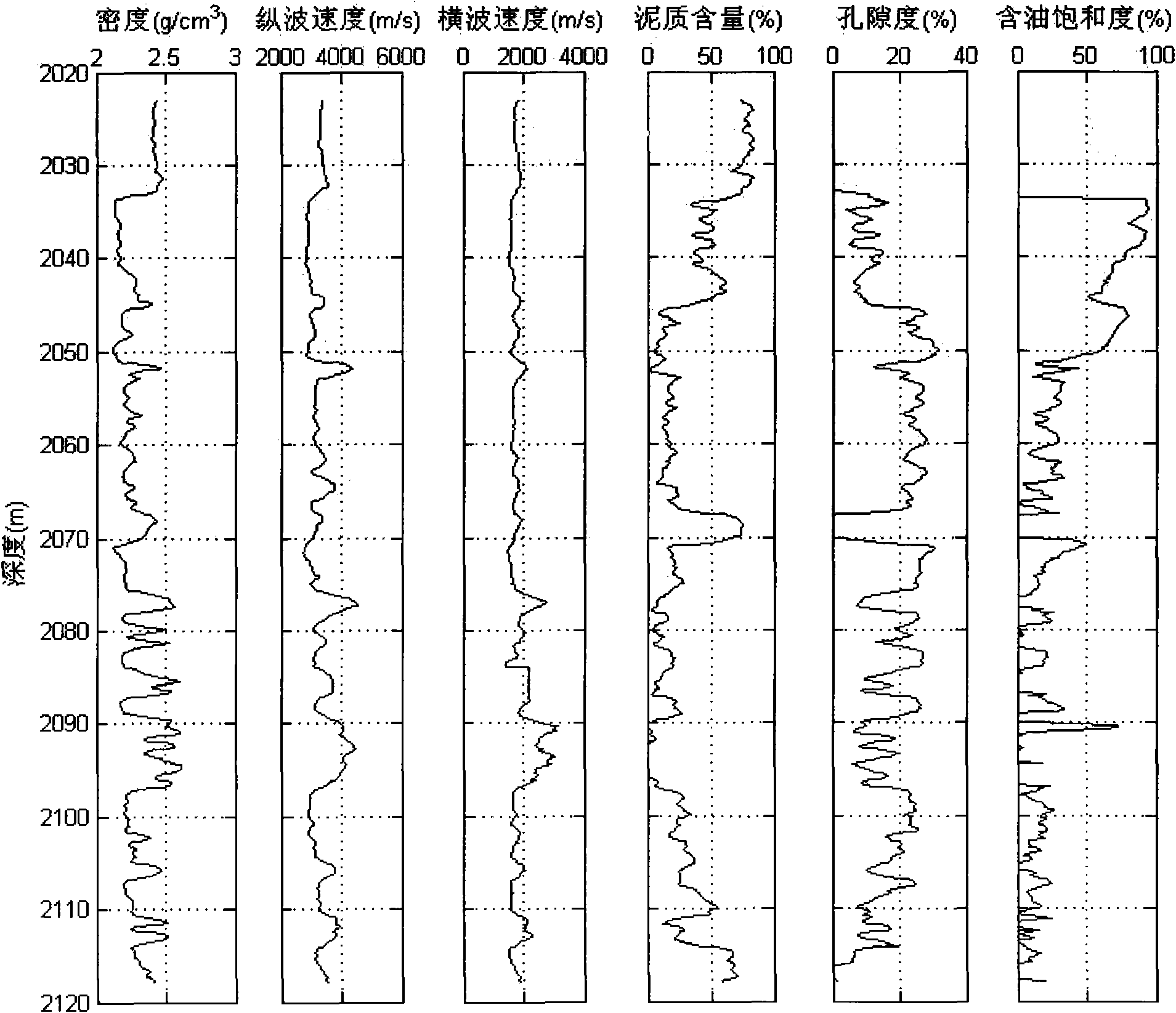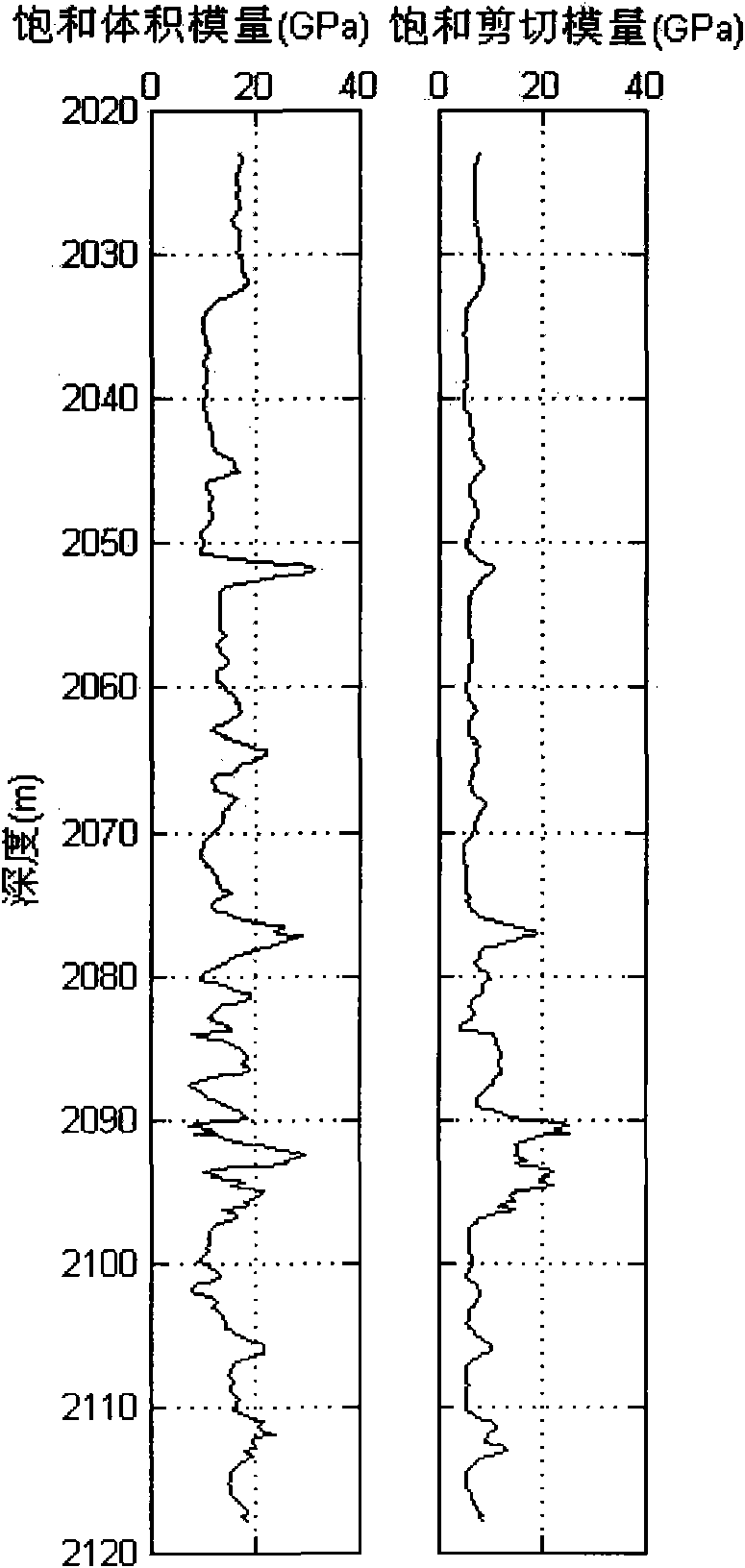Method for evaluating permeability of reservoir layer according to interval transit time and density inversed pore flat degree
A technology of density inversion and acoustic time difference, which is applied in earthwork drilling, seismology for logging records, surveying, etc.
- Summary
- Abstract
- Description
- Claims
- Application Information
AI Technical Summary
Problems solved by technology
Method used
Image
Examples
Embodiment Construction
[0046] Figure 2 shows the petrophysical skeleton modeling results of an oil well in the North Sea. The well is a reservoir at 2033-2116m, of which 2033-2051m is an oil layer, and 2051-2116m is an oil-water layer. Figure 2a are the longitudinal, shear wave, density, porosity, shale content and oil saturation curves of the reservoir section; Figure 2b is the bulk modulus and shear modulus of saturated rock calculated from compressional and shear waves and density; Figure 2c Pore flatness data inverted for P-wave data; Figure 2d for the reason Figure 2c The ratio curve of the bulk modulus to the shear modulus of the dry rock skeleton calculated from the pore flatness. Figure 2e for the reason Figure 2c The bulk modulus and shear modulus curves of the dry rock skeleton calculated from the pore flatness. Figure 2f for the reason Figure 2c The bulk modulus of saturated rock calculated from the pore flatness, and the shear modulus of saturated rock is the same as that...
PUM
 Login to View More
Login to View More Abstract
Description
Claims
Application Information
 Login to View More
Login to View More - R&D
- Intellectual Property
- Life Sciences
- Materials
- Tech Scout
- Unparalleled Data Quality
- Higher Quality Content
- 60% Fewer Hallucinations
Browse by: Latest US Patents, China's latest patents, Technical Efficacy Thesaurus, Application Domain, Technology Topic, Popular Technical Reports.
© 2025 PatSnap. All rights reserved.Legal|Privacy policy|Modern Slavery Act Transparency Statement|Sitemap|About US| Contact US: help@patsnap.com



